

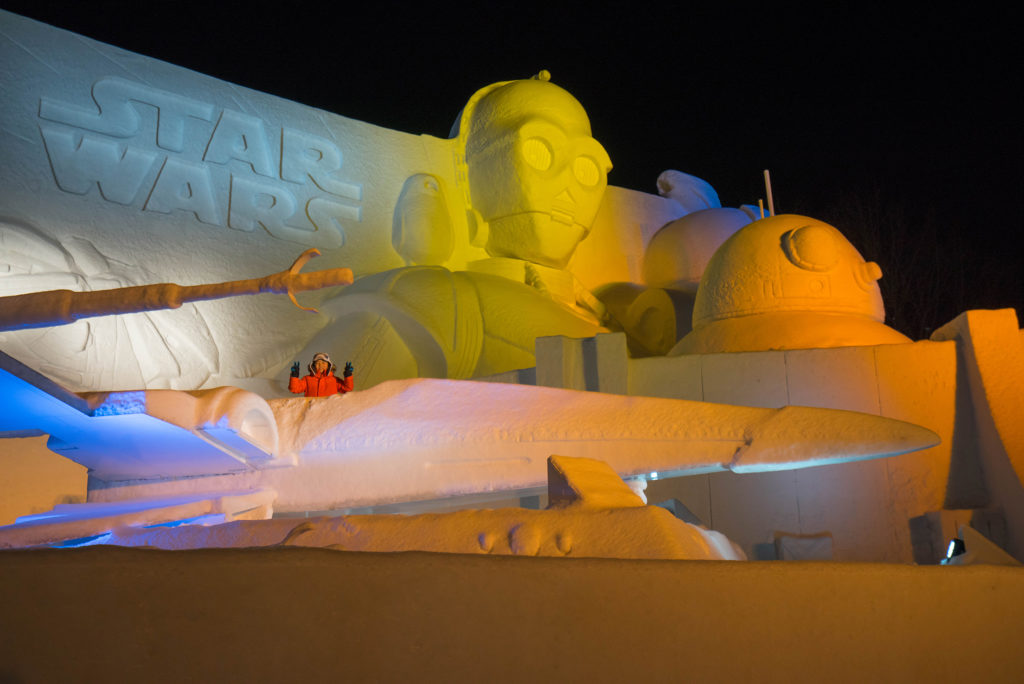
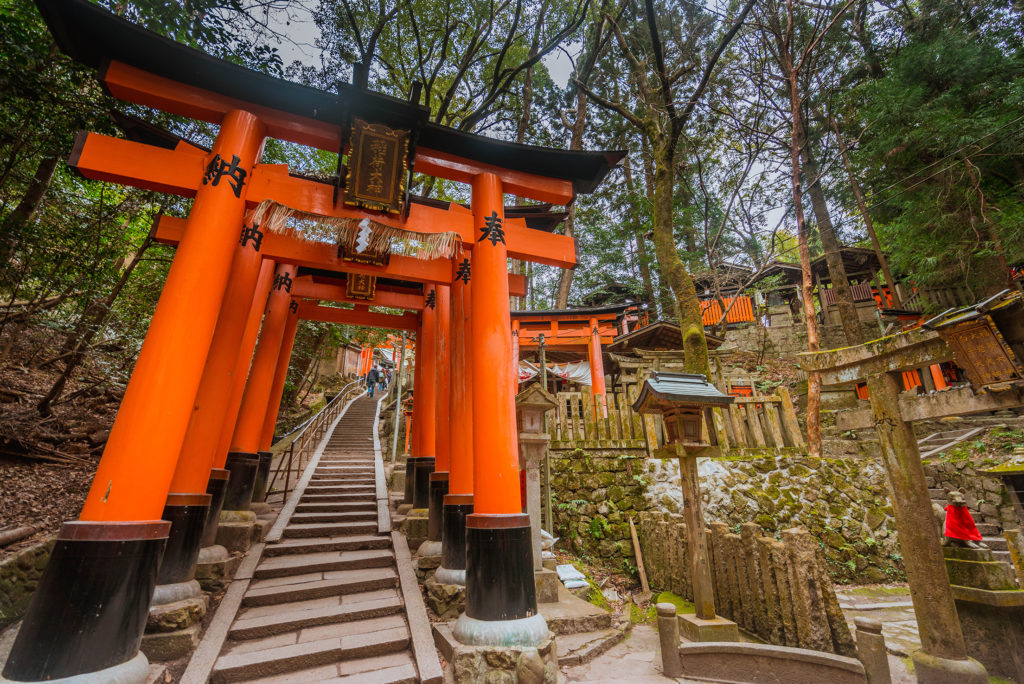
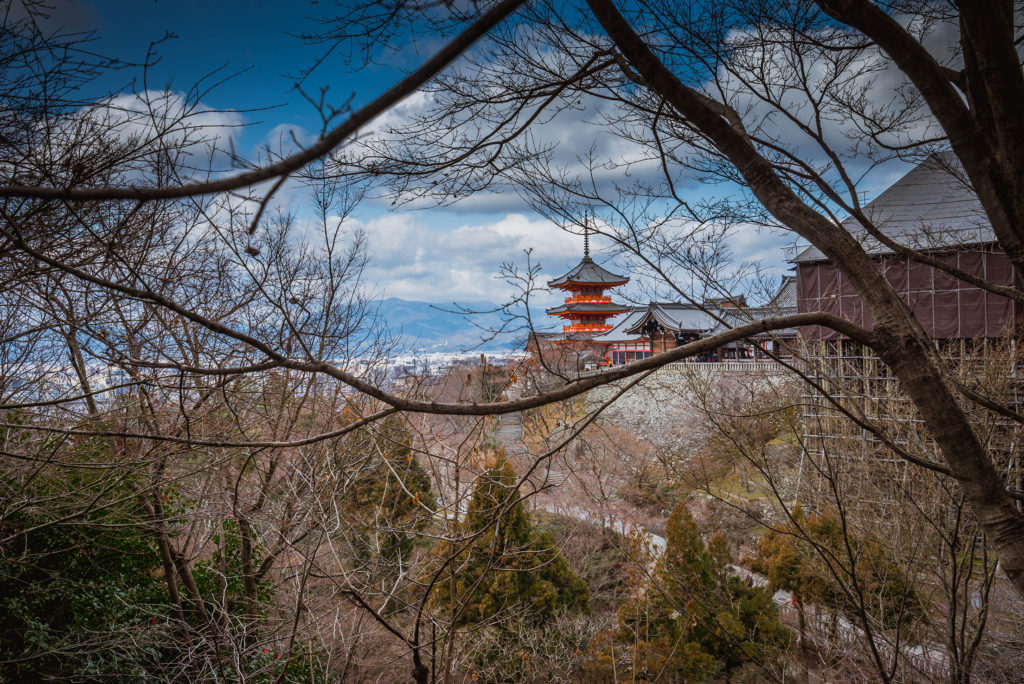


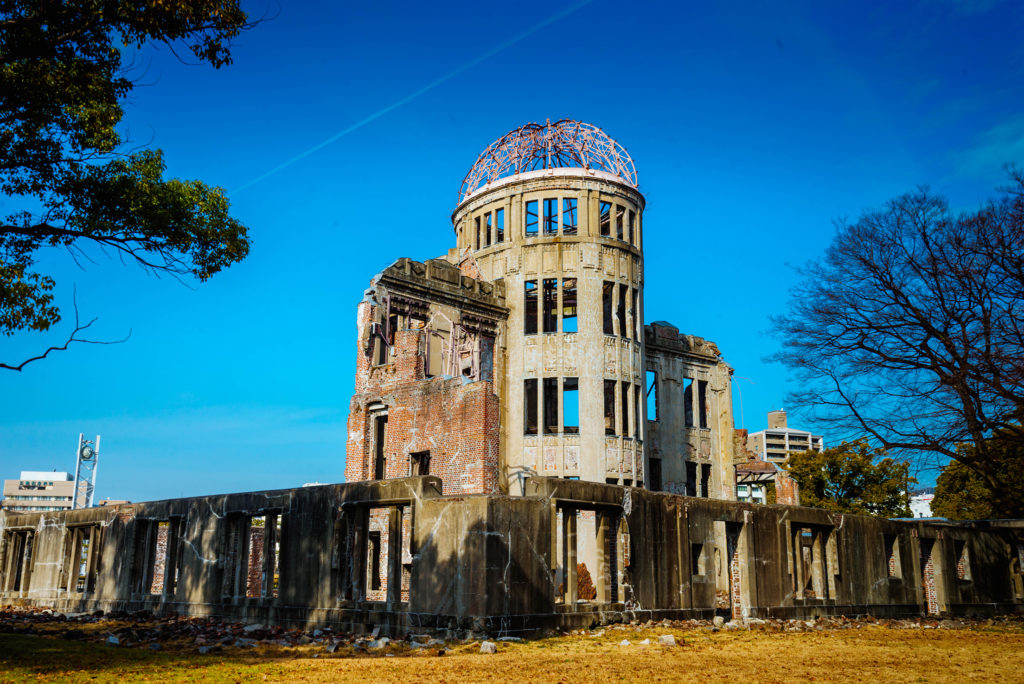
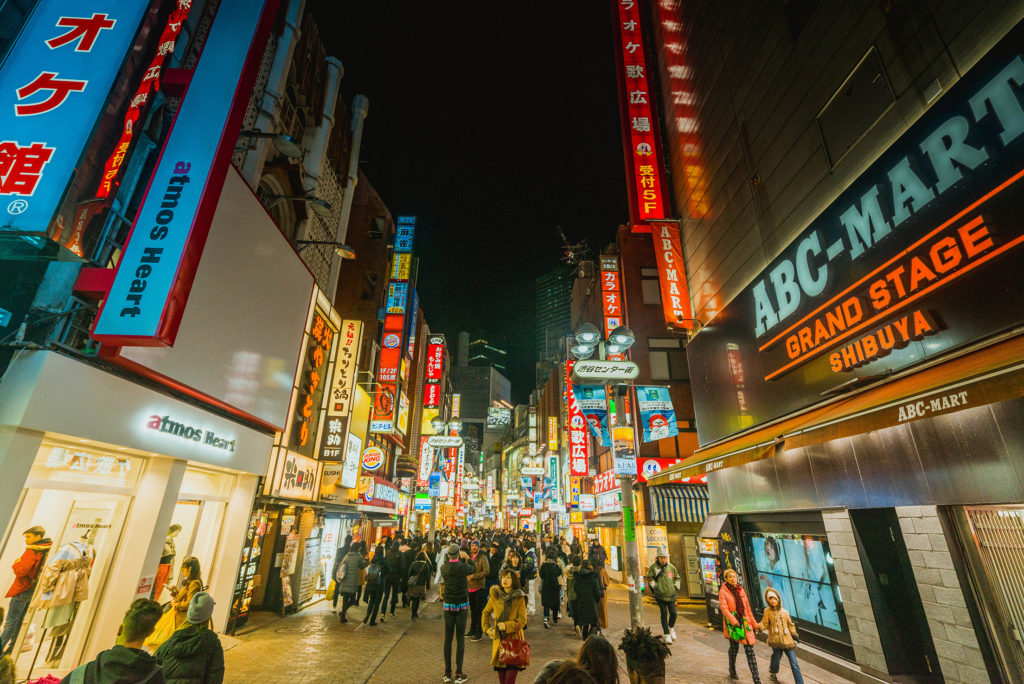

In my fevered dreams, there’s always snow. So much snow that my mind struggles to find a way to accurately count just how much is falling from the sky onto the white, ice-covered streets of Asahikawa, Japan. Although it makes no logical sense, I am frantic to make sure I count each flake, for that is how fever dreams work. For two out of every six hours, after the Tylenol wears off but before I can take more, I lie in a waking dream state in our hotel room, shivering with a 102 fever, creating strange mental spreadsheets as I try to count the snow falling in my brain.
When the fever does break, I sit up in bed, and I’m in front of our large eighth-floor window looking out over the impressively snowy landscape of Asahikawa, the second-largest city in Hokkaido. My urge to count has faded along with my fever. But my dreams are based in reality: It is snowing hard, constantly. There are giant mountains of snow piled up in parking lots and along street curbs, everywhere you look. There’s a foot of snow hard-packed on the streets, and 18 inches on the sidewalks. Yet life seems to go on as normal. There’s traffic on the streets, and people walking on the sidewalks. The residents of Hokkaido live their winter lives on an ever-thickening crust of snow.
But we are not out enjoying the Asahikawa Winter Festival. A strange rogue virus has seen to it that we stay in our room. The only foray into the Asahikawa blizzard is by Paula, who is recovering from her own virus, and goes out into the frigid afternoon in search of ibuprofen (what’s the Japanese word for Advil?) to try to attack those two godawful hours of uncontrolled fever.
And even that goes disastrously. Pivoting on an icy street, Paula’s feet slip out from under her, and she falls backward, hard, hitting first her tailbone, then the back of her head, hard enough to see stars, and leave her woozy on her feet. I am still back in the hotel. And she has narrowly averted serious injury. Or worse. People have died from such falls on the ice.
It is only the latest way in which our brilliant – well, my brilliant – plan to celebrate and embrace winter in Hokkaido, Japan, one of the snowiest places on earth, has gone awry. Our friends and family in the outside world, following our journey on Instagram, won’t even take note of the 36 hours in which nothing gets posted. I will manage to make it appear that all is well. But all is not.
The truth, as anyone who engages in long-range travel knows well, is that it takes a tremendous amount of energy to see the world. And a trip can go off the rails for reasons you don’t always control. Sometimes those unexpected deviations are the best things about a voyage. This wasn’t one of those times.
The idea of our February trip was to join in northern Japan’s world-famous celebrations of winter — in particular the Snow Festival in Sapporo, on the northern island of Hokkaido; the Winter Festival in Asahikawa; the Frozen Waterfall Festival just outside of Asahikawa; and the Snow Lights festival in Otaru. We also scheduled a snowmobile excursion in the hugely popular ski town of Niseko before flying south to Kyoto for our second week, where we would be joined by my son Brendan in much less snowy climes.
Things started out well. Our flights from Paris to London to Tokyo went off without a hitch. We had a great dinner in a tiny, off-the-beaten-path place in Tokyo, then headed the next morning to Tokyo Central train station before sunrise. We had decided we would take the bullet train to Sapporo, which is a solid seven-hour haul, but would allow us to see the Japanese countryside in a way a plane would not. Our one splurge was upgrading our Japan Rail Passes to 1st Class passes, so we rolled out of Tokyo in very comfortable accommodations and headed north.
The decision to take the train was the right one. The farther north we traveled, the more beautiful the countryside became – and the harder it snowed. By the time the train emerged from the longest undersea tunnel in the world, connecting the main island of Honshu to Hokkaido, the snow was full bore. The bullet train ends in southern Hokkaido, so we hopped on a local train for the last two and a half hours to Sapporo, Hokkaido’s largest city, with a population of 2 million.

The local was unlike any train we’d ever been on. It was a noisy diesel thing with a clutch and gearbox like a big rig truck. You could feel whenever the engineer shifted gears as we climbed up and down the snowy hills of the Pacific coast. The tracks hugged the coast of southern Hokkaido, and the juxtaposition of heavy falling snow and deep blue Pacific Ocean waves was at once beautiful and surreal.
After we checked in to our hotel in Sapporo and grabbed a bite to eat, we headed off to Odori Park, the linear park downtown that is the largest of several sites for the Snow Festival. There were a dozen snow sculptures the size of small chateaus, beautifully lit up along the mile-long circuit, interspersed with booths serving food and hot drinks.
Heading back to the hotel, we were determined that tomorrow, we would check out the other locales around town that are part of the citywide celebration.
We never made it. Paula was hit with a sudden, fierce upper respiratory infection that was not quite the flu, but pretty close. It felt like the kind of illness that floats around in airplane air on long flights. The next day, and a good part of the one after, was spent in our room, with me making forays into the snow for tissue, a thermometer (which would come in handy later), drugs and food.
Our third night’s hotel was up the train tracks two hours, in Asahikawa. I dragged my exhausted but recovering wife onto the late afternoon train. That night in Asahikawa, we walked (slowly) to the riverfront to see dancers on a stage made of snow, and a light-and fireworks show projected onto and above the biggest snow sculpture we’ve ever seen. It was unfamiliar, beautiful, and strangely moving. As we walked back to the hotel through gently falling snow, I thought, “Maybe our luck is about to change.”
It was. For the worse.
We had planned the next day to head to the Frozen Waterfall Festival, about an hour’s bus ride up the road. But that night, Mr. Strange Fever Virus came to visit, striking the Waterfall Festival off the list. The fever held on for 30 hours, and when it broke, it was also clear that this wounded travel duo was not going to saddle up the next day and climb aboard two snowmobiles. Strike the Niseko snowmobile adventure off the list.
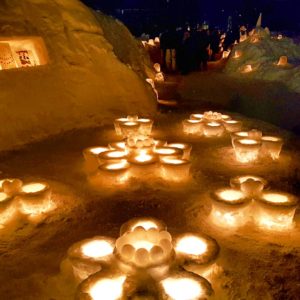
Instead, we took the train south to the beautiful oceanside town of Otaru, and spent a quiet evening enjoying the lighted canals and walkways, dotted with snow art. The next morning, we flew to the slightly warmer climes of Osaka, the gateway to Kyoto. My virus was gone, but I had picked up a lesser version of Paula’s cold. With six days left, and Brendan having flown up from Phnom Penh, we weren’t going to sit around our rented apartment, so hacking and coughing, we dragged ourselves into the Kyoto tourist maelstrom.
What makes Kyoto so beautiful is that it is one of the few major cities that wasn’t bombed during World War II. That means most of its ancient wooden temples survive, unlike in Tokyo, where almost all of the temples are replicas rebuilt since 1945. To tour Kyoto, then, is to really be in contact with old Japan, and to understand the through-lines from ancient Japanese culture to today.
We learned that Kyoto was originally proposed as a possible target site for one of the atomic bombs dropped on Japan by the United States in World War II, but a U.S. general who had honeymooned in Kyoto successfully lobbied Harry Truman to take it off the list. Fate is a strange thing.

That fact was backdrop to one of our most memorable days, a day trip from Kyoto to Hiroshima and the Peace Memorial Park and Museum there. The museum does not delve into the fraught debate about the American decision to use atomic weapons on the civilian population of Japan. Rather, in incredibly moving and emotional detail, it documents the toll of the attack on men, women and children, and advocates for a world without the need for such weapons. That’s a hard thing to be against.
The museum also does a great job of putting visitors in the moment, on 6 August, 1945, a clear, warm morning, when residents of Hiroshima noticed a lone B-29 flying lower than the planes normally did when they were on their way to bomb Tokyo, and how, moments later, a terrifying new chapter in human history dawned in a ball of fire and radiation.
There’s a Peace Bell in the park, under a stone canopy, that visitors are invited to ring and make a wish for a peaceful world. In the modern world, such a wish has been rendered into a cliché. But when you’re in Hiroshima, and you’ve just seen too many photographs of children suffering radiation burns, wishing for world peace feels urgent. We were pretty solemn as we climbed the steps and tolled the large iron bell.
We spent our last weekend in Tokyo, one of our favorite cities in the world. This was our second time to the city, and because it has a population north of 9 million people, we can’t begin to say that we know it well. But Tokyo exudes a high-voltage energy that is hard to resist, and it reveals an unexpected charm in some of its discrete smaller neighborhoods embedded within the megaplex. Despite its immense size – or perhaps because of it – Tokyo is clean, polite, safe, insanely efficient, modern and diverting. It is a city, and a country, that has a particular appreciation of beauty and design in all things, and that sensibility is visible almost everywhere you look. The cumulative effect is mesmerizing.
As for the decision to travel in winter, I have had a little time to reflect on that idea. On our last day in Kyoto, we took a walk along the Philosopher’s Path, made famous because a beloved philosophy professor walked its pastoral length every morning.
It was cold and windy, not unexpected conditions given that it was February in Japan. But at least the ground wasn’t covered in ice. We had read about the Philosopher’s Path in our guidebook, which drew a vivid picture of how beautiful a walk it is, along a quiet stream, lined with boutiques, cafes and teahouses, and how the best time to walk it is in the spring, when everything is in bloom and everyone is out and about.
It was about the 10th time we had read something that talked about how glorious places are in the spring. Of course, while we were walking along the Philosopher’s Path, everything was closed up tight and there were few people along the route, probably because it was the dead of winter, all the trees were stripped to their branches, and it was way too cold for leisurely walking.
And that’s when I had my own philosophical epiphany: Since all of these places are so beautiful in the springtime, why don’t we actually travel to them in the spring? These are the kinds of brilliant insights that one gets on the Philosopher’s Path in Japan, after two weeks of cold, sickness and hallucinatory dreams.
And so ends the grand experiment of leaning into winter. We tried it, we really did. But Japan’s winter leaned back hard, leaving behind a trail of illness, bruised bones, thermometers, headaches, canceled excursions, and balls of Kleenex.
We’ll definitely be back. But it won’t be in February. As for next winter, we’re thinking south.
Morocco, anyone?

great article
Thank you!